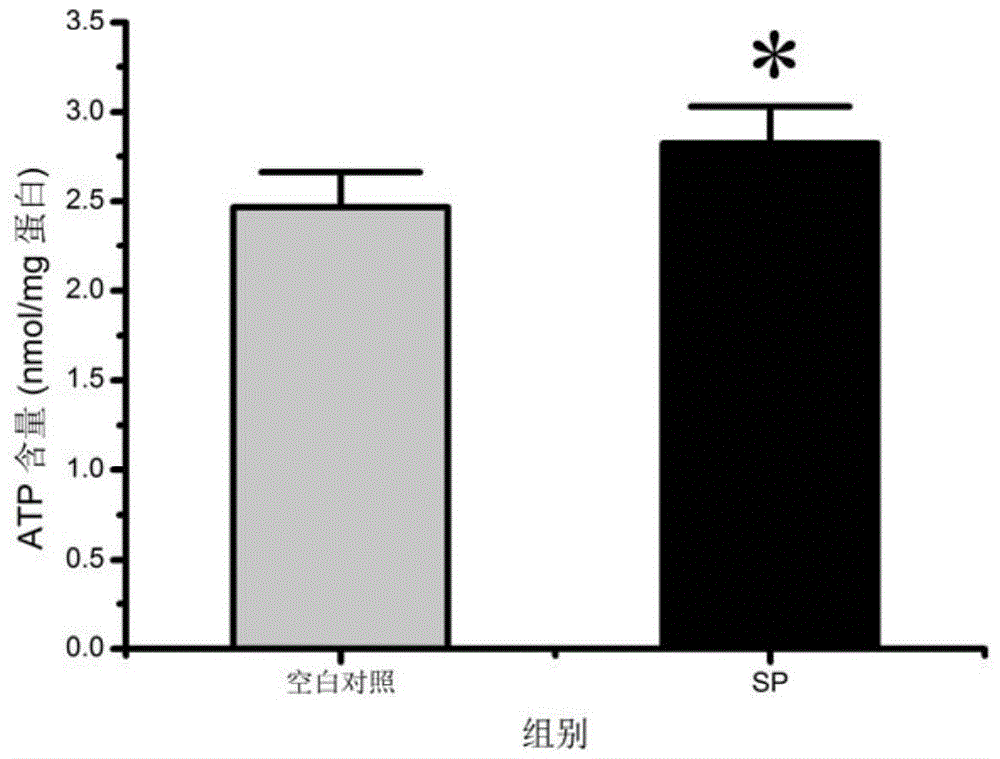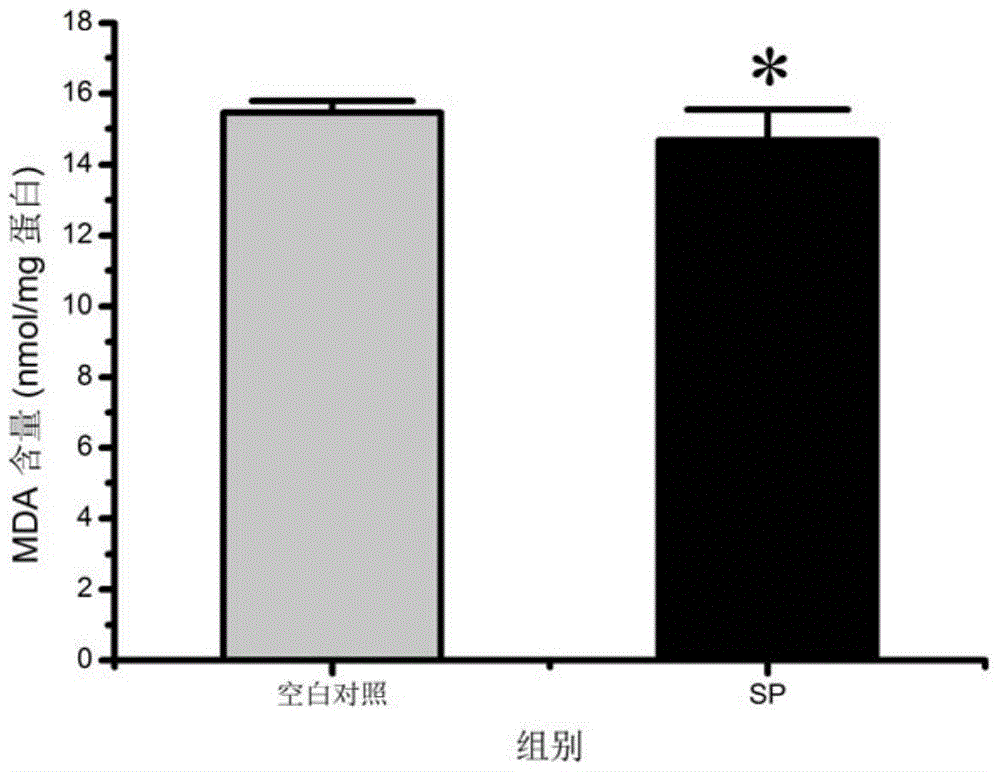Application of sodium pyruvate in preparation of storage liquid for improving stored erythrocyte quality and/or post-infusion tissue damage
A technology of sodium pyruvate and tissue damage, applied in the field of medicine, can solve the problems of reducing the hemolysis rate of stored red blood cells, reducing immunogenicity, and failing to improve red blood cell oxidative damage
- Summary
- Abstract
- Description
- Claims
- Application Information
AI Technical Summary
Problems solved by technology
Method used
Image
Examples
Embodiment 1
[0036] Example 1, preparation of stored erythrocytes added with sodium pyruvate
[0037] 1. Preparation of sodium pyruvate solution
[0038]Accurately weigh 35 mg of sodium pyruvate powder with an electronic analytical balance, dissolve it in 1 mL of normal saline, and prepare a sodium pyruvate solution with a sodium pyruvate concentration of 35 mg / mL. filter with a pore size bacterial filter, place in a sterile centrifuge tube, and set aside.
[0039] 2. Acquisition of red blood cells and preparation of stored red blood cells
[0040] Take mice and inject 2.5% pentobarbital sodium solution (the injection volume is calculated according to 0.3mL / 100g mouse body weight), fix the anesthetized mice on a heating plate at 37°C, and place them in a sterile ultra-clean working room. On the stage, wipe the outer surface of the abdominal cavity and thorax of the mouse with an alcohol cotton ball, and take blood by aseptic heart puncture, and use CPDA-1 solution as an anticoagulant and...
Embodiment 2
[0042] Embodiment 2, measure the ATP content in the stored erythrocyte
[0043] The ATP content of the seven groups of stored erythrocytes obtained in Example 1 after storage for 14 days was measured by the method described in the ATP detection kit (the ATP detection kit was purchased from Beyontian Biotechnology Co., Ltd., Cat. No. S0026). Take SP group 3 # (the final concentration of sodium pyruvate in the stored erythrocytes is 2mM) as an example, the results are as follows figure 1 shown.
[0044] figure 1 The results showed that the ATP content of the blank control group was 2.46±0.19nmol / mg protein, and the SP group 3 # The ATP content in stored red blood cells was 2.82±0.21nmol / mg protein. Compared with blank control group, SP group 3 # The ATP content in stored red blood cells was significantly increased (* indicates p<0.05). It shows that sodium pyruvate can increase the ATP level in red blood cells during the storage of red blood cells, provide substrates for e...
Embodiment 3
[0046] Embodiment 3, measure MDA content in the stored erythrocyte
[0047] Use the instruction method in the MDA detection kit (the MDA detection kit was purchased from Nanjing Jiancheng Biotechnology Co., Ltd., article number A003-1) to measure the lipid peroxidation product-propanediol of seven groups of stored red blood cells obtained in Example 1 after storage for 14 days. Aldehyde (MDA) content. Take SP Group 2 # For example, results such as figure 2 shown.
[0048] MDA is one of the most important terminal metabolites produced by the peroxidation reaction between lipids in the cell membrane and ROS. Its content reflects the intensity and speed of intracellular lipid peroxidation. Therefore, the MDA content is used to reflect the cell and An important indicator of tissue oxidative stress damage (KwiecienS, KonturekPC, SliwowskiZ, et al. Interaction between selective cyclooxygenase inhibitors and capsaicin-sensitive afferent sensory nerve vesin pathogenesis of stress-...
PUM
 Login to View More
Login to View More Abstract
Description
Claims
Application Information
 Login to View More
Login to View More - R&D
- Intellectual Property
- Life Sciences
- Materials
- Tech Scout
- Unparalleled Data Quality
- Higher Quality Content
- 60% Fewer Hallucinations
Browse by: Latest US Patents, China's latest patents, Technical Efficacy Thesaurus, Application Domain, Technology Topic, Popular Technical Reports.
© 2025 PatSnap. All rights reserved.Legal|Privacy policy|Modern Slavery Act Transparency Statement|Sitemap|About US| Contact US: help@patsnap.com



